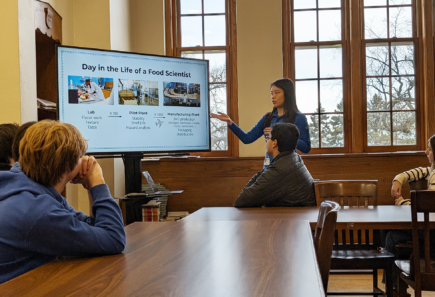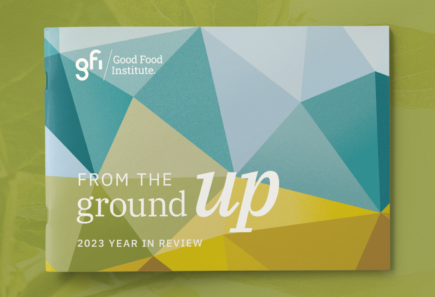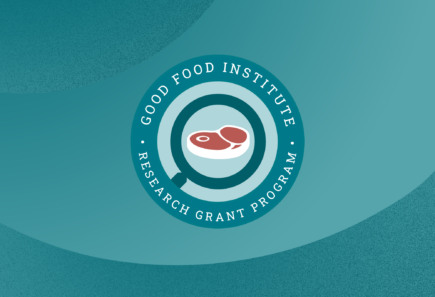
Korean language resources
Compelling Korean-language research and reports focusing on alternative proteins from the Good Food Institute.

Compelling Korean-language research and reports focusing on alternative proteins from the Good Food Institute.

How an engineer and a food scientist built practical skills through experiential learning opportunities.

Learn about the people and partnerships growing the future of food from the ground up in our Year in Review.

Discover GFI research grant recipients breaking boundaries and spearheading global alternative protein innovation.
The combination of flow cytometry—which allows single cell analysis and sorting—with Raman spectroscopy—which allows crude biochemical analysis of cells—can be used to develop new strains of microorganisms with enriched protein, fat, or iron compounds.
Consumer and sensory research can help companies and academic researchers better understand seafood consumers' needs and desires. Understanding consumers' needs will allow alternative fish researchers to ask and prioritize the correct biological and technical questions. Appropriate and thoughtful prioritization can avoid unnecessarily diluting resources in the short term and ensure that the expanding product landscape in the long term is well-matched to customer expectations.
Creating a catalog of molecules responsible for the characteristic flavor of a species will enable alternative protein product manufacturers to create products that more accurately replicate the sensory experience of animal meats, removing a major barrier to their widespread adoption.
Optimizing bioreactor and bioprocessing technologies for the needs of the cultivated meat industry has the potential to substantially reduce the cost of cultivated meat production. Innovations in cultivated meat bioprocessing can be broadly classified into strategies focused on food-grade operation, process intensification, and the exploration of novel bioreactor geometries.
There is a limited number of edible non-animal scaffold materials that are naturally adhesive for use in cultivated meat production. Identifying a larger and more diverse set of these materials, which tend to be inexpensive and accessible, and characterizing their industrial scalability, environmental impact, and effects on food properties supports progress towards cultivated meat price parity.
A lack of publicly-available cell lines from relevant species and cell types continues to be a challenge for the field of cultivated seafood. Addressing this challenge will require further investigation into the basic biology of aquatic species, development of optimized cell isolation procedures, and sharing of cell lines via existing and new repositories.